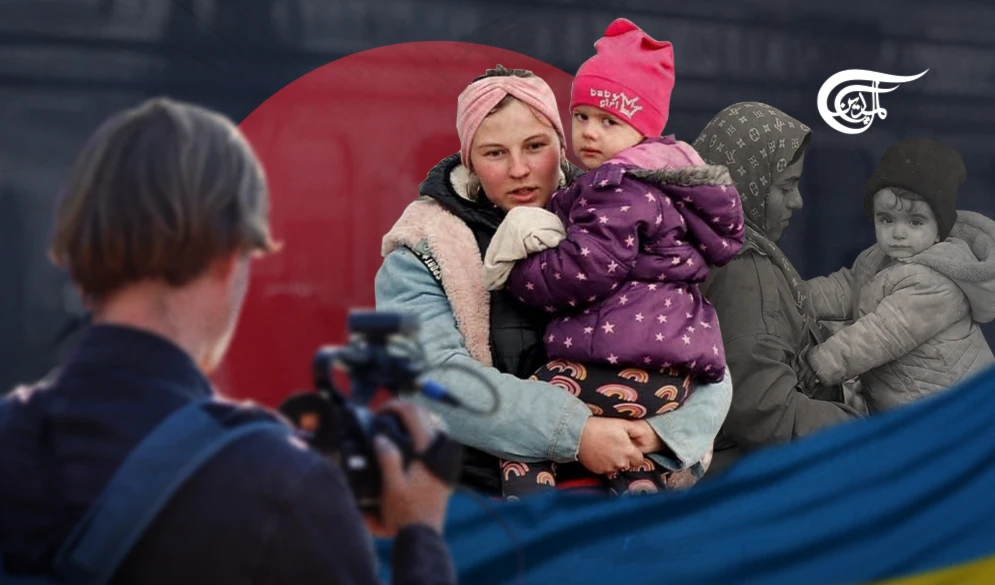Women’s Rights in Afghanistan: Whitewashing US Imperialism
The US administration used the excuse of women’s rights when talking about Afghanistan, not because it really cared or worried about Afghan women, but because such an approach would gain louder support for its brutal invasion.
Around three months ago, the world watched in horror as hundreds clung to US planes, scrambling to leave the country after the Taliban took hold of Kabul, Afghanistan’s capital.
Twenty years later, after the brutal US invasion began, President Joe Biden stated, that the US objective in Afghanistan was to defeat terrorism there. After the US began withdrawing troops from Afghanistan he said: “the idea that we’re able to deal with the rights of women around the world by military force is not rational.”
Zahra Nader, a journalist and Ph.D. student from Afghanistan who’s based in Canada, said the US talked about “saving Afghan women from misogynist forces, this gender apartheid.”
“That did not happen,” she said. “That did not happen at all.”
His statement came 20 years late, after the gut-wrenching war that lasted two decades and the disastrous aftermath of the US’s military invasion in the country, leaving Afghan women facing an unknown future, once again, under Taliban rule.
US president Joe Biden was asked last year by CBS if he takes “some responsibility” if Afghan women lose more of their rights under a Taliban takeover after the US withdraws, and the US president answered, “No, I don’t!”
The total collapse of the Afghan government, after the United States claimed to have spent billions to support it and the Afghan security forces, made many supporters of the US invasion of Afghanistan critical of the underlying motives behind the invasion.
Colonialism is far from over
President Joe Biden said that after nearly 20 years of war, it was clear that the US military could not transform Afghanistan into a modern, stable democracy.
Some scholars noted that his statement came by as “colonial.”
World leaders in 2001 used the excuse of Afghan women and young girls living under the Taliban to try and justify occupying the country militarily– “white men saving brown women from brown men”, as feminist scholar Gayatri Chakravorty Spivak put it.
Shortly after George W Bush announced the “war on terror”, Afghan women became the primary focus in American media.
Then-First Lady Laura Bush, in a speech on the radio to address the nation, condemned the “severe repression against women in Afghanistan” and claimed that the “fight against terrorism is also a fight for the rights and dignity of women”.
Time magazine published a report on the oppression that the women in Afghanistan face titled, “Lifting the Veil”.
At the UN’s International Women’s Day celebration on March 8, 2002, Laura Bush staged yet another PR stunt in which she stated that the war in Afghanistan is “helping Afghan women return to the lives they once knew”.
The US administration used the excuse of women’s rights when talking about Afghanistan, not because it really cared or worried about Afghan women, but because such an approach would gain louder support for its brutal invasion.
The media played an important role in gendering the US war in Afghanistan.
The media’s primary role in justifying the invasion
Shortly after 9/11, and the beginning of the war, US media organizations started publishing images of Afghan women wearing burkas under the Taliban’s rule and comparing these images with photos from earlier times when their clothes were not dictated by men.
This portrayed Afghan women as oppressed and in need of Western liberation, and gender was brought, once again, to the frontlines of global politics, and all Muslim men were identified and stereotyped as oppressors of women and the main enemies of the liberal, and progressive Western civilization.
Those news reports purposely aimed to not only create the false assumption that the West truly cares about Afghan women’s rights, but also suggest that women’s rights were in fact protected under the American occupation of Afghanistan.
Researcher Shailja Patel tweeted the following to debunk misconceptions over the US invasion:
I am once again asking you to stop pretending that the U.S. invasion of Afghanistan in 2001 brought anything but death and devastation to Afghan women and children. pic.twitter.com/fOX8MIbDmm
— Shailja Patel (@shailjapatel) August 16, 2021
Afghan women were not “saved” by the occupation forces. The US and its NATO allies did not protect Afghan women from oppression.
White savior complex
Portrayals of US military forces as saviors of Afghan women have been used over and over again to justify the US war there from the beginning.
Nine days after US bombs started dropping over Afghan’s capital, the State Department published a report that concluded: “Today, with Kabul and other Afghan cities liberated from the Taliban, women are returning to their rightful place in Afghan society—the place they and their families choose to have.”
Fear now grasps Afghan women with places of prominence in politics, media, and activism. In areas where the Taliban has already total control, member and fighters have partaken “in a pattern of threats, intimidation, and violence against members of the media,” Human Rights Watch wrote in a report it released in April.
Hollywood actors Channing Tatum and Tom Hardy have been cast in a drama being currently produced about 3 former special force team members who go back to Afghanistan to rescue families and allies left behind amid the fall of Afghanistan.
It is expected that several such propaganda TV dramas would be released in an attempt to shift the narrative in the eyes of the public, especially the younger audience.
The aftermath
Nearly 70,000 civilians were killed and injured in the US’s longest-running war-to date.
But the violence has been entirely justified, brushed off, and validated by false claims that women and girls in Afghanistan once again need Western rescue efforts – as if the people being murdered purposely are just collateral damage.
What has the US been doing in Afghanistan for the past 20 years?
How could anyone possibly believe in this liberal interventionist narrative when Afghan women’s empowerment fell apart in a few days as the international public watched, horrified?
Warmongers and imperialists will remain claiming that they fought for women’s rights – don’t believe them.

 Ghadir Hamadi
Ghadir Hamadi
 6 Min Read
6 Min Read











